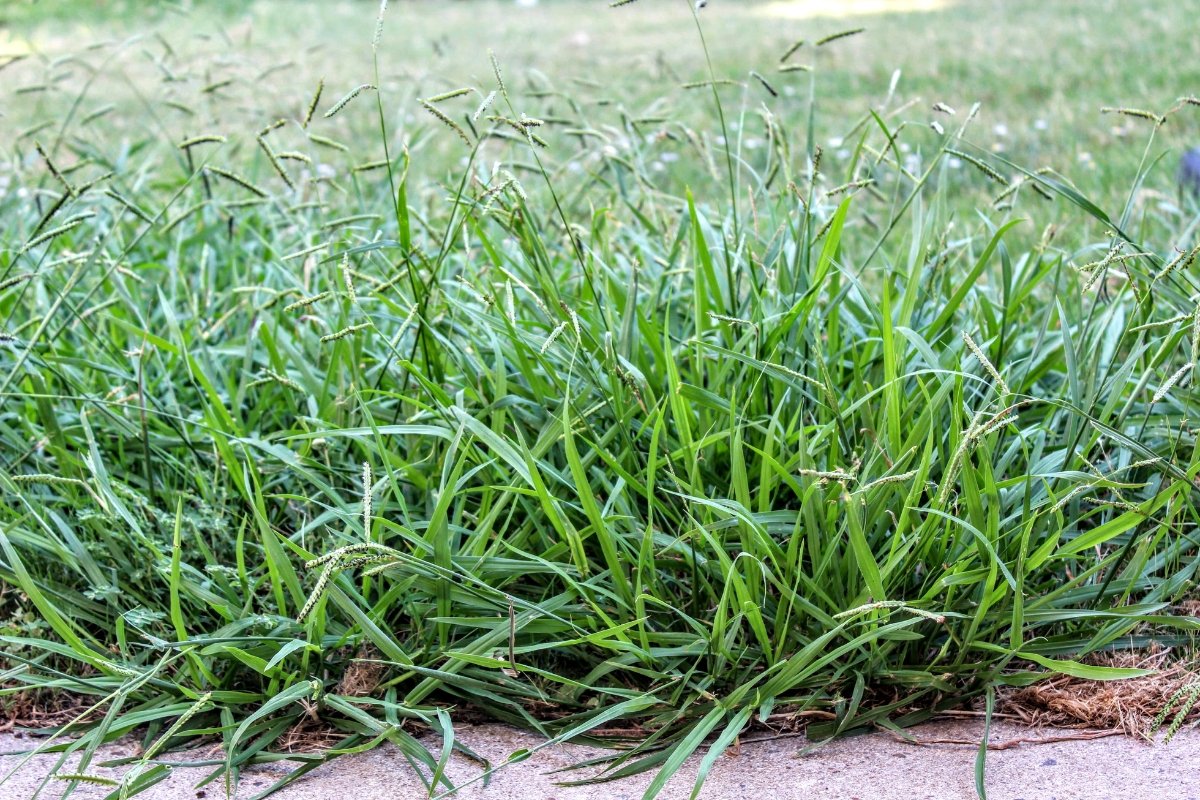Who says crabgrass has to ruin your lawn? The stubborn weed can take over your yard, leaving you with a bumpy, unsightly green patch. Unfortunately, it’s very difficult to get rid of once it’s taken hold. But that doesn’t mean it’s impossible. With the right techniques and some effort, you can ensure your lawn looks great year-round despite the presence of crabgrass.
This post will reveal some valuable tips to help you tackle this pesky problem, so you can have the lawn you’ve always wanted.
Ready to get rid of crabgrass and bring out the beauty of your lawn? Let’s dive in!
What is Crabgrass and How Does it Affect Your Lawn?
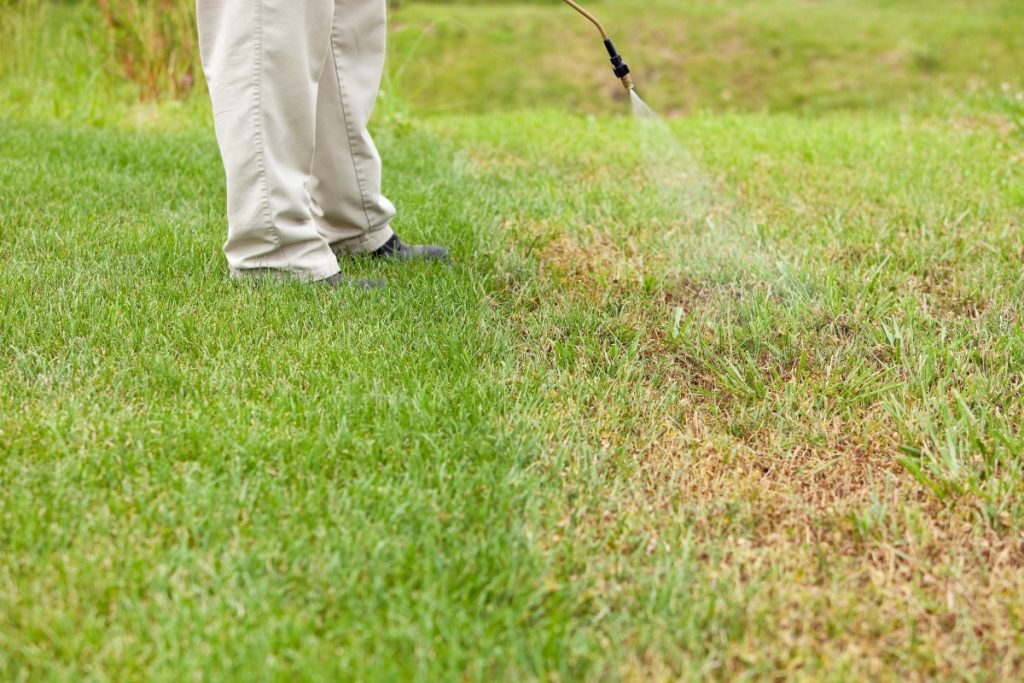
Crabgrass is one of the most common lawn weeds and is known to be a nuisance for homeowners. It’s an annual weed, which means it germinates and dies each year and is especially prominent in the summer. It typically invades thinner areas of lawns where the turfgrass is weak, leaving patches of yellow-green, course-textured grass with wide leaves.
Crabgrass prevention is key to keeping your lawn healthy and weed-free. Regular lawn maintenance is the best way to ensure that your lawn is crabgrass-free. This includes mowing your lawn regularly, fertilizing it in the spring, and aerating and overseeding it to make sure the grass is strong and healthy. It’s also a good idea to use a pre-emergent herbicide in early spring to prevent the germination of crabgrass and other weeds.
If you already have a crabgrass problem, there are a few options for controlling it. The first step is to remove the existing crabgrass with a rake or by hand. Once you’ve removed the crabgrass, you can use a post-emergent herbicide to kill any remaining weeds. Be sure to read the label carefully and follow the instructions when applying the herbicide.
Another option is to reseed the area with a variety of grass types. This will help to fill in the thin spots and make it more difficult for crabgrass to germinate. It’s also important to maintain your lawn by removing any weeds that may sprout up, mowing regularly, and applying fertilizer and other treatments as needed.
Finally, there are several treatments that can be used to get rid of crabgrass. Using a spot treatment of herbicide is an effective way to target and kill crabgrass, while using mulch or a thick layer of compost will help to smother the existing crabgrass and prevent new weeds from growing.
Preventing Crabgrass
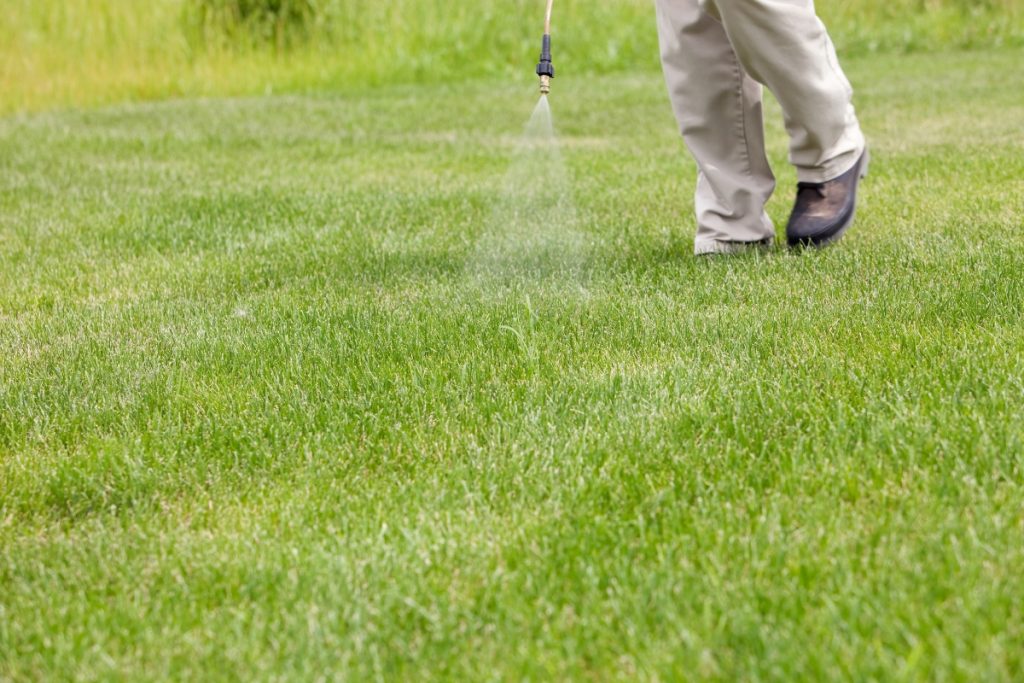
One of the most common, and pesky, lawn weeds is crabgrass. It can spread quickly and crowd out the grass that you’ve worked so hard to maintain. The good news is that there are a few simple steps you can take to get rid of crabgrass and keep your lawn looking great.
One of the most effective methods for controlling crabgrass is to use pre-emergent herbicides. Such materials are applied in early spring and form a barrier that prevents crabgrass seed from germinating. Make sure to use a herbicide that explicitly states that it is effective against crabgrass.
Proper fertilization of your lawn is also important in preventing crabgrass. Fertilizer should be applied in the early spring and then again in the fall. Applying too much fertilizer will cause crabgrass to spread more rapidly, so be sure to apply only the amount recommended by the manufacturer.
Maintaining a consistent mowing height and pattern is also helpful in controlling crabgrass. Mowing too short can create an environment that is more conducive to crabgrass growth. If you have an existing infestation in your lawn, mowing regularly can help to keep it from spreading.
Watering your lawn correctly is also an important factor when it comes to preventing crabgrass. It is important to not overwater or underwater your lawn. Too much water can create an environment that encourages crabgrass to spread, while too little water will make it difficult for your grass to establish itself and outcompete the crabgrass for resources.
If you already have an infestation of crabgrass in your lawn, manually pulling or digging it up can be helpful. Pulling up crabgrass by hand is time consuming and may not be feasible if you have a large area to cover. If manual removal is not an option, spot treating the affected areas with a post-emergent herbicide may be necessary.
Natural Alternatives for Crabgrass Control
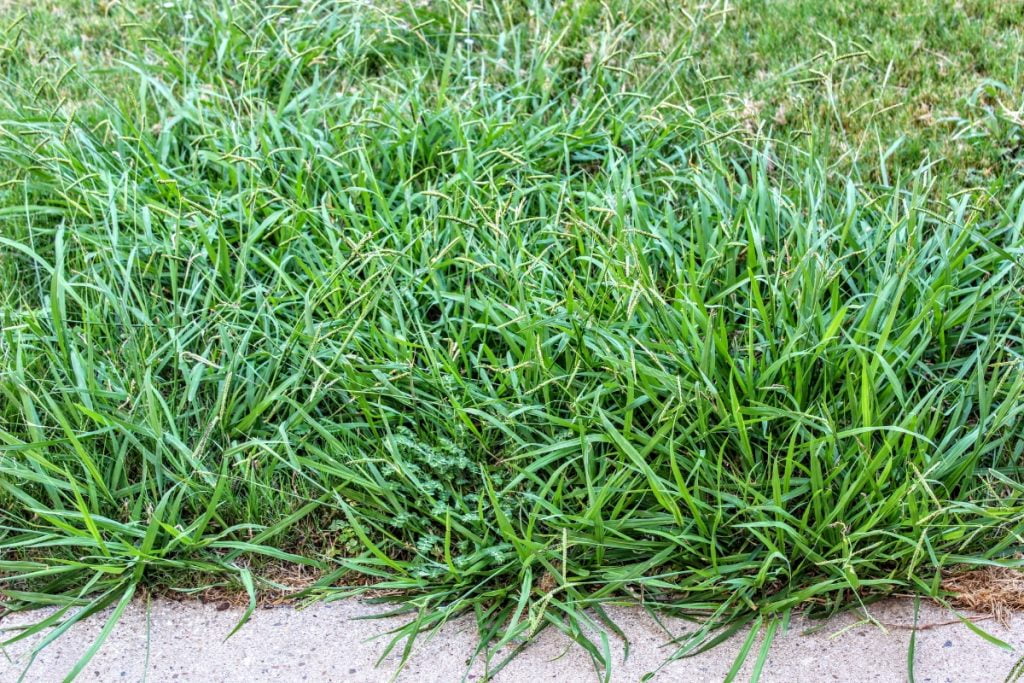
We all want our lawns to look great all summer long, but crabgrass can be a real nuisance. Fortunately, there are a few natural alternatives to traditional chemical-based solutions that can help keep crabgrass at bay.
Organic solutions are a great way to control crabgrass without having to rely on harsh chemicals. An easy and affordable way to get rid of crabgrass is to use a pre-emergent herbicide made from corn gluten meal. Corn gluten meal is an all-natural, non-toxic herbicide that works by blocking root development in crabgrass, stopping it from growing and spreading. It’s a safe and effective way to get rid of crabgrass without using harsh chemicals.
If you’re looking for a more eco-friendly method, consider using a natural vinegar solution. Vinegar is a powerful natural herbicide, and it can be used to kill crabgrass and other weeds. Mix two parts vinegar with one part water, and spray it directly onto the crabgrass. Be sure to only use the solution in sunny, dry conditions, as it can damage other plants in your lawn due to its acidic nature.
Finally, you can also use mulch to help keep crabgrass from growing. Mulch is a great way to protect your lawn from weed invasion in the long run. The thick layer of mulch will help keep crabgrass from germinating and growing in your lawn. Be sure to use organic mulch, as the chemicals in non-organic mulch can be damaging to your lawn.
Best Practices for Keeping Crabgrass Away
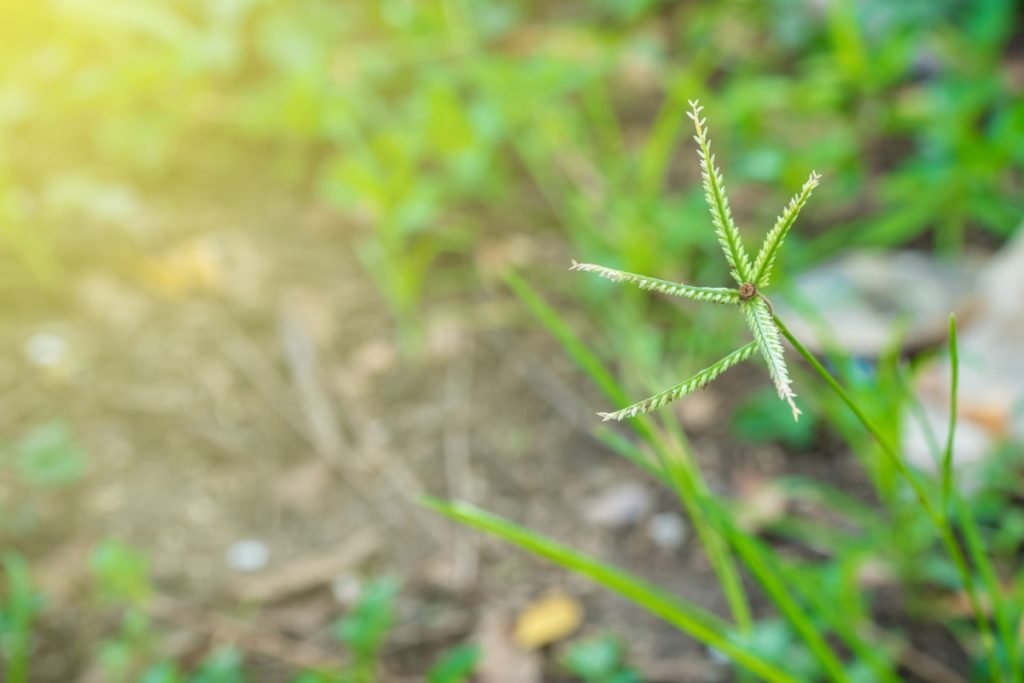
Crabgrass is a common weed problem in many lawns, but luckily, it can be controlled with the right techniques. Knowing the best practices for preventing and managing crabgrass can help keep your lawn looking great and healthy.
The first step in managing crabgrass is prevention. Keeping a well-fertilized and healthy lawn will help prevent the weed from taking root. You should mow your lawn regularly and keep it at the right length. Longer grass allows the weeds to establish a foothold and spread. Additionally, make sure to water your lawn deeply and infrequently to encourage deep root growth.
Once crabgrass has taken root, there are a few strategies you can use to get rid of it. Hand-pulling the weed is often the most effective and safest way to remove it. If that is not an option, chemical products can be used to control the weed. These products should be used carefully and according to the directions on the label. Additionally, a pre-emergent can be used to prevent crabgrass from germinating.
Finally, proper lawn maintenance is key for long-term crabgrass control. Maintaining a healthy lawn with a thick canopy of grass prevents the weed from taking over your yard. Make sure to get rid of excess thatch, aerate compacted soil, and keep your lawn well-fertilized.
Effective Crabgrass Control: Keeping Your Lawn Healthy
It is essential to remember that crabgrass is a very common weed and can be quite a nuisance if it’s not dealt with properly. To eradicate this weed, it is important to use a combination of pre-emergent and post-emergent herbicides.
Pre-emergent herbicides should be applied early in the spring and again in the fall to prevent crabgrass from germinating. Post-emergent herbicides should be applied in the summer when the weed is actively growing and is easier to kill.
Another important factor in getting rid of crabgrass is mowing regularly. It is important to mow lawns at the proper height and not cut them too short, as this can make the lawn more prone to infestation. It is also important to water the lawn regularly and fertilize it in order for it to remain healthy and to discourage crabgrass growth.
Finally, it is important to make sure that the lawn is free of debris and that there is no excessive shade, as this can create ideal conditions for crabgrass growth. By taking the necessary steps to get rid of crabgrass and maintain a healthy lawn, readers can ensure that their lawn looks great all year long.
If you’re interested in keeping your lawn in the best possible condition and free from weeds, Glover Landscapes is the team for you!
Our landscaping services guarantee the lawn and landscape of your dreams. Call us (404) 510-6437 or request for a free estimate through our website form and let’s talk about how to keep your lawn in good condition. Choose Glover Landscapes today!
